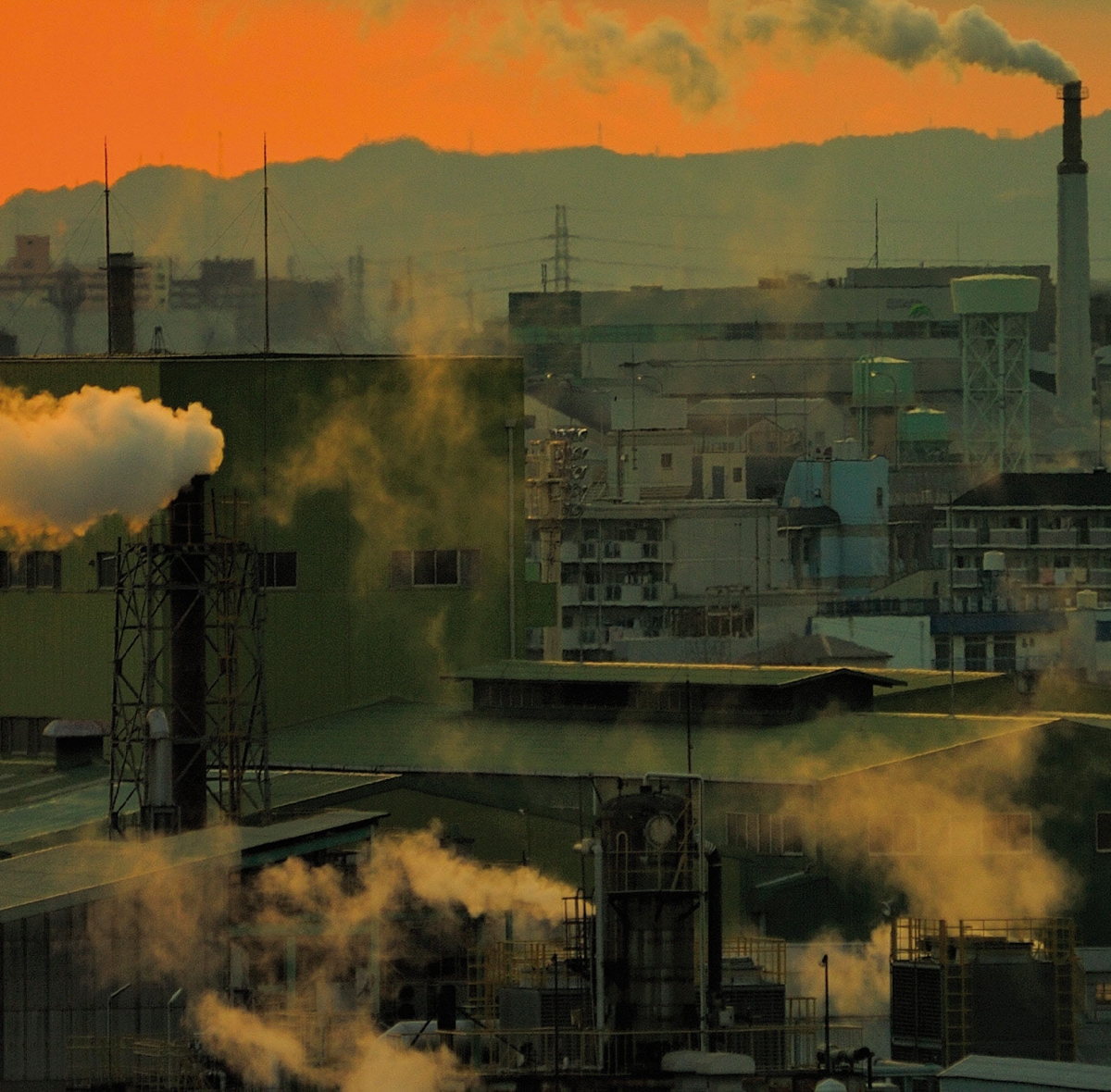Japan's long-range transboundary PM2.5 problem
Fine particulate matter (PM2.5), a long-range transboundary air pollution (LRTAP) substance, first emerged as a major social issue in Japan in early 2013.1 Severe PM2.5 pollution in areas of China including Beijing was reported in Japan through broadcast and print media in January. At the end of the month, high concentrations of PM2.5 exceeding environmental quality standards were detected across western Japan, with concentrations of PM2.5 in Fukuoka city (in Fukuoka Prefecture) reaching levels three times the norm. Every year, western Japan experiences damages to quality of life due to yellow dust coming from China and, in recent years, has experienced damage to forests due to acid rain and acid fog and issued warnings for photochemical smog, all of which are believed to have originated in China. Under these circumstances, as a new LRTAP substance coming from China, PM2.5 has aroused a high degree of public interest all at once.
In the past, the environmental quality standard for Suspended Particle Matter (SPM) in Japan was set at PM10 levels.1 However, considering the risks to health such as lung cancer, a discussion on the necessity of regulating the finer PM2.5 particles ensued, and in September 2009, environmental quality standards were designated at less than or equal to 15μg/m3 as the annual average standard and less than or equal to 35μg/m3 as the 24 hour standard.2 Furthermore, in accordance with the increased public interest in 2013, the Japanese Ministry of the Environment proposed provisional guidelines of a 24 hour standard of 70μg/m3 for public warnings in February of that year. This value has become the standard for guidelines (revised in November 2013 and November 2014) to warn citizens to avoid unnecessary and non-urgent outdoor activity and strenuous outdoor exercise for extended periods of time. In comparison, the environmental quality standard for PM2.5 in urban areas in China is set at 75μg/m3.
When the problem first arose as a social issue in January 2013, the 24 hour average concentration of fine particulate matter in Beijing exceeded China’s environmental quality standard of 75μg/m3 and Japan’s provisional guideline of 70μg/m3 for public warnings, resulting in air quality conditions that pose a serious risk to health. Although China’s severe PM2.5 problem garnered the world’s attention in the winter of 2013, the composition of air pollutants in the country did not change suddenly in that year. Outbreaks of extreme air pollution had been and remain common in China. It was only that the winter of 2013 was marked by lower than usual temperatures and weak surface winds, providing optimal conditions for fog to form. The combination of these weather conditions inhibited the diffusion of air, leading to the detection of higher than usual concentrations of PM2.5.
Research has been conducted on the influence of China’s PM2.5 problem on concentrations of fine particulate matter in Japan. According to Kanaya et al. (2013), for example, the percentage contribution of China on average yearly concentrations of PM2.5 in Japan by region is estimated at 61 percent in the Kyushu region (9 prefectures), 59 percent in the Chugoku region (5 prefectures), 59 percent in the Shikoku region (4 prefectures), and 55 percent in the Kinki region (6 prefectures). Thus, over half of the PM2.5 in western Japan is thought to have originated in China. On the other hand, the percentage contribution of China on average yearly concentrations of PM2.5 in the Kanto region (7 prefectures, including Tokyo) was 39 percent, and 51 percent is estimated to have originated domestically in Japan.
In the case of ozone (O3), another LRTAP substance, the frequency of photochemical smog warnings dropped below 100 days per year around 1990 but shot up to a steady 170 to 180 days per year around 2010. The influence of China was discussed in Japan on this matter as well. However, according to Kanaya et al., the percentage contribution of transboundary ozone from China was estimated to be 12 percent while ozone of domestic origins and ozone originating in North America and Europe were estimated to be 22 percent and 7 percent, respectively. Therefore, in the case of ozone, there is a need to consider the movement patterns of pollutants on a much larger, global scale.
The Convention on Long-range Transboundary Air Pollution (CLRTAP) in Europe can serve as a reference for dealing with LRTAP problems such as PM2.5 in East Asia. This convention opened for signature in 1979 in response to transboundary damages from acid rain in Europe, entered into force in 1983, and formed a regime to respond to transboundary air pollution issues through the continued adoption of various protocols. At present in East Asia, there are also regional efforts such as the Acid Deposition Monitoring Network in East Asia (EANET), but the effectiveness of those efforts remains to be evaluated.
Prof. Shunji MATSUOKA, Graduate School of Asia-Pacific Studies, Waseda University
